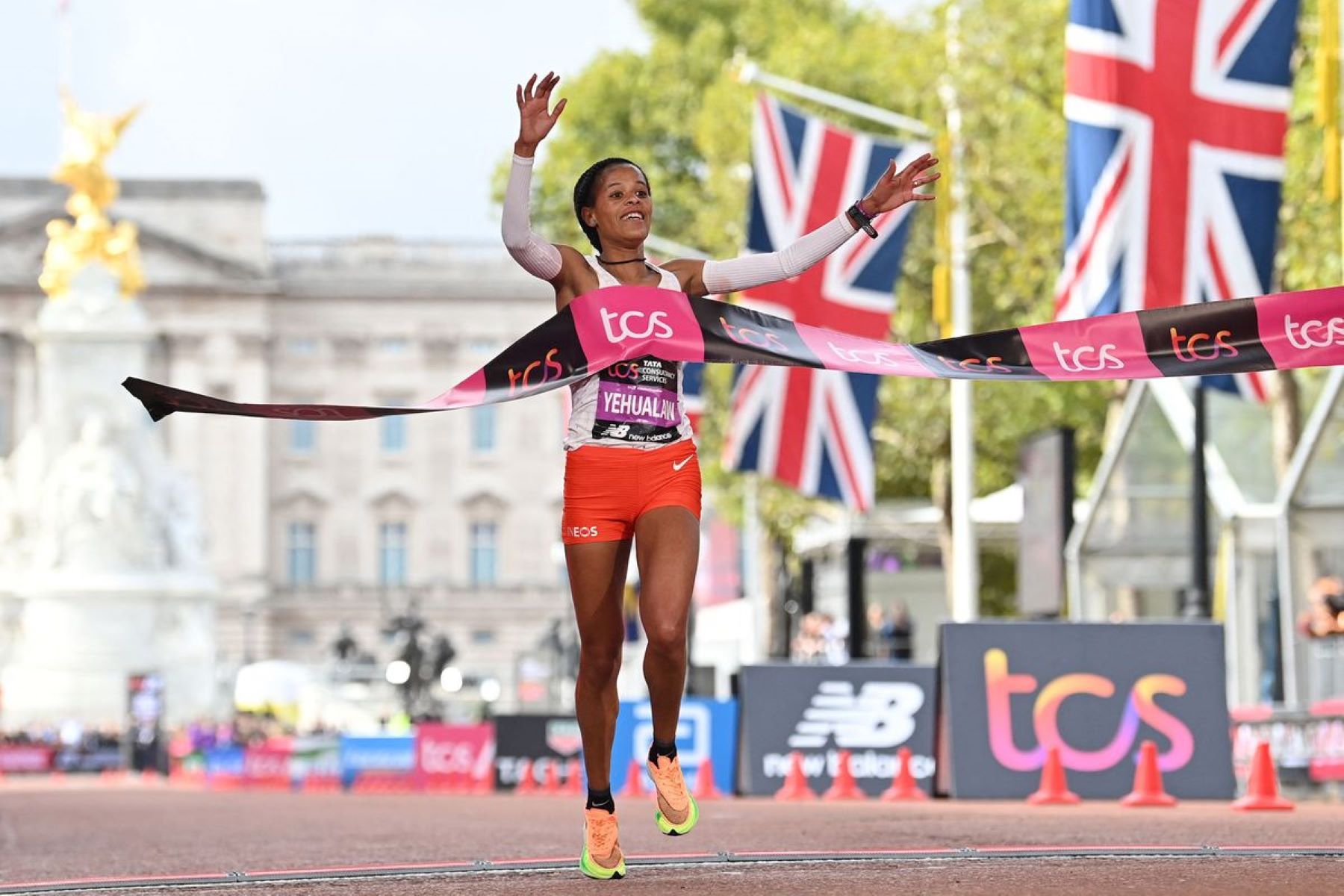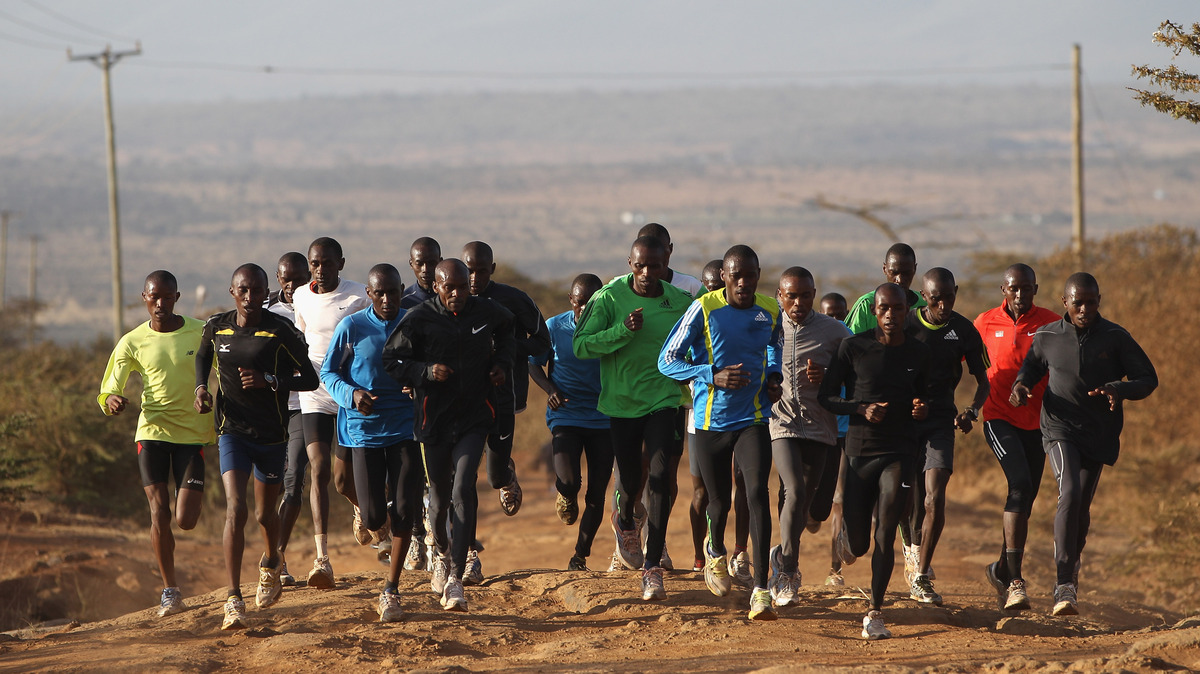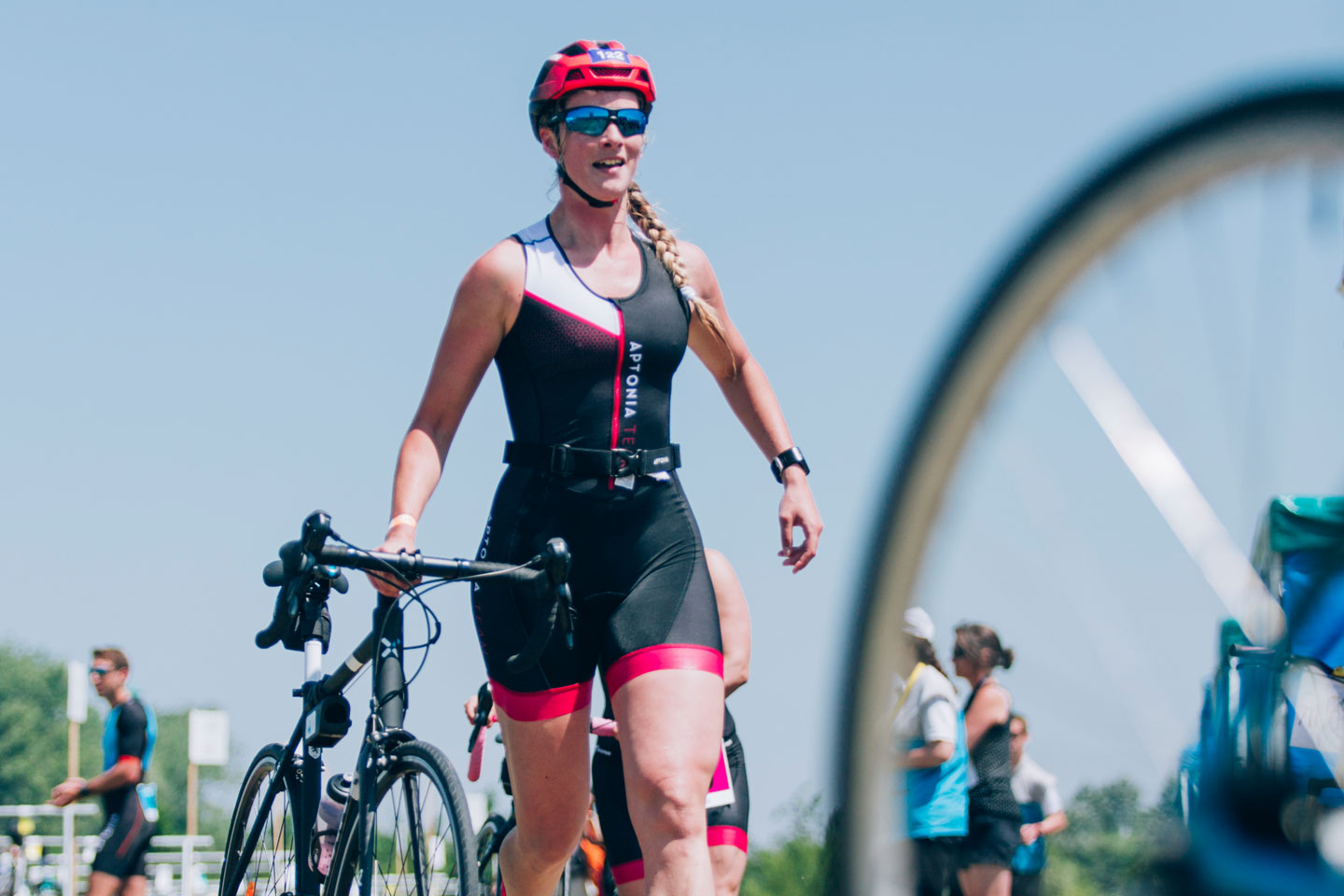Home>Misc>Featured>Which Of The Following Is Not An Important Predictor Of A Successful Endurance Athlete?


Featured
Which Of The Following Is Not An Important Predictor Of A Successful Endurance Athlete?
Modified: August 21, 2023
Find out which important predictor is not featured for a successful endurance athlete. Explore the key factors for optimal performance and training.
Introduction
Being a successful endurance athlete requires a combination of various factors that contribute to their overall performance and ability to endure physical challenges. While there are several important predictors of success, not all factors carry equal weight. In this article, we will explore some of the most critical aspects that determine an athlete’s success in endurance sports.
Endurance athletes participate in activities that require prolonged periods of physical exertion, such as long-distance running, cycling, swimming, and triathlons. These sports demand exceptional stamina, cardiovascular fitness, mental resilience, and strategic training approaches to excel in the competitive arena.
Understanding the key factors that can influence an athlete’s success is crucial for both athletes and coaches alike, as it enables them to make informed decisions and design effective training programs. While there are numerous variables to consider, we will focus on genetic factors, training volume, endurance capacity, mental toughness, nutrition, and the importance of rest and recovery.
It’s important to note that each athlete is unique, and individual differences play a significant role in determining success. Nonetheless, by delving into these key areas, we can gain a better understanding of the factors that contribute to success in endurance sports.
Genetic Factors
Genetic factors play a fundamental role in determining an individual’s athletic potential. While hard work and dedication are essential for success, certain genetic traits can give athletes an advantage in endurance sports.
One of the most crucial genetic factors is VO2 max, which refers to the maximum amount of oxygen that an individual can utilize during intense exercise. This measurement is a strong predictor of an athlete’s aerobic capacity and endurance performance. Research has shown that individuals with naturally high VO2 max tend to excel in endurance events.
Another genetic factor that may influence athletic performance is muscle fiber composition. There are two primary types of muscle fibers: slow-twitch (Type I) and fast-twitch (Type II). Endurance athletes usually have a higher proportion of slow-twitch muscle fibers, which are more efficient in oxygen utilization and fatigue resistance. On the other hand, sprinters and power-based athletes tend to have a higher percentage of fast-twitch muscle fibers.
Besides VO2 max and muscle fiber composition, genetic variations can also impact an athlete’s ability to adapt to training stimulus, recover efficiently, and avoid injury. For example, some individuals are more prone to muscle damage or inflammation, while others have a faster recovery rate. These genetic differences can ultimately affect an athlete’s performance and long-term potential.
While genetic factors provide a foundation, they do not solely determine an athlete’s success. Environmental factors, such as training, nutrition, and mindset, also play a pivotal role in maximizing an individual’s potential.
Despite the importance of genetics, it’s essential to note that many successful endurance athletes have achieved remarkable results through sheer dedication, commitment, and a relentless pursuit of excellence. While genetic advantages can provide a head start, hard work, proper training, and a well-rounded approach are crucial components in achieving success in endurance sports.
Training Volume
One of the key factors that significantly impacts an athlete’s performance in endurance sports is training volume. The amount and consistency of training play a pivotal role in developing the necessary physiological adaptations to excel in long-duration activities.
Training volume refers to the total amount of exercise an athlete engages in over a given time period. It includes the duration, intensity, and frequency of training sessions. Endurance athletes typically have high training volumes to build their cardiovascular capacity, muscular endurance, and overall stamina.
Increasing training volume gradually and progressively is essential to prevent overtraining and injuries. Athletes and coaches must strike a balance between pushing their limits and allowing sufficient recovery time. This balance is crucial as it allows the body to adapt to the stress of training and become stronger over time.
In addition to the quantity of training, the quality of the workouts is equally important. Endurance athletes often incorporate a variety of training modalities, including long slow-distance runs, interval training, tempo runs, hill workouts, and cross-training activities like swimming or cycling.
Periodization is a widely used training approach that involves dividing the training plan into distinct phases, each with specific objectives and intensities. This method allows athletes to focus on building different aspects of fitness throughout the training year, ensuring optimal progress and performance when it matters most.
It’s important to note that every athlete’s training volume is individualized based on their goals, fitness level, and personal circumstances. Factors such as age, experience, recovery capacity, and injury history must be taken into account when designing an effective training program.
Consistency in training volume is key to improving endurance performance. Regular and structured training sessions allow the body to adapt and gradually build the necessary physiological adaptations, such as increased aerobic capacity, improved muscular endurance, and enhanced efficiency.
Ultimately, finding the right balance between training volume, intensity, and recovery is a critical aspect of optimizing an athlete’s performance in endurance sports. It requires careful planning, monitoring, and adjusting based on individual responses and progress.
Endurance Capacity
Endurance capacity is a crucial factor that determines an athlete’s ability to sustain prolonged physical exertion and perform well in endurance sports. It refers to the body’s capability to withstand and recover from the demands of long-duration activities.
One of the key components of endurance capacity is cardiovascular fitness. A strong and efficient cardiovascular system allows the body to effectively deliver oxygen and nutrients to the muscles, endure extended periods of exercise, and recover quickly. Regular aerobic training, such as running, cycling, or swimming, is crucial for improving cardiovascular fitness and enhancing endurance capacity.
Muscular endurance is another essential aspect of endurance capacity. It refers to the ability of the muscles to generate force over an extended period. Endurance athletes need muscular strength and endurance to sustain repetitive movements and resist fatigue. Incorporating strength training exercises, particularly targeting the muscles used during the specific sport, can help improve muscular endurance.
Efficient fuel utilization is also critical for endurance capacity. Endurance athletes rely on the body’s ability to efficiently burn carbohydrates and fats for energy during prolonged exercise. Proper nutrition and training strategies that focus on optimizing fuel utilization can significantly enhance an athlete’s endurance capacity.
Pacing and energy management play a vital role in optimizing endurance capacity. Endurance events often require athletes to maintain a consistent pace over an extended period. Understanding how to pace oneself, conserve energy, and strategically distribute effort throughout the event is essential for sustainable performance and avoiding premature fatigue.
Mental resilience and the ability to overcome physical and mental challenges are also essential components of endurance capacity. Endurance athletes often face periods of discomfort, doubt, and fatigue during long-distance events. Mental toughness, determination, and effective coping strategies are crucial for pushing through these challenges and maintaining a strong performance.
Furthermore, proper hydration and temperature regulation are vital for endurance capacity. Maintaining adequate fluid balance and managing body temperature during endurance events can significantly impact an athlete’s performance and overall well-being.
Building endurance capacity takes time and consistent training. Gradually increasing workout length and intensity, incorporating endurance-focused workouts, and implementing recovery strategies are key to improving endurance capacity.
Overall, enhancing endurance capacity involves a holistic approach, combining cardiovascular fitness, muscular endurance, fuel utilization, pacing strategies, mental resilience, and proper hydration. By focusing on these areas, athletes can maximize their endurance performance and reach their full potential in endurance sports.
Mental Toughness
Mental toughness is a critical factor that distinguishes successful endurance athletes from the rest. It encompasses the psychological attributes and abilities that enable athletes to overcome challenges, push through discomfort, and maintain peak performance during endurance events.
Endurance sports demand not only physical stamina but also mental resilience. Athletes must be able to cope with the physical and mental demands of long-duration activities, such as fatigue, pain, self-doubt, and monotony.
One aspect of mental toughness is the ability to set and maintain goals. Endurance athletes often set long-term goals, such as completing a marathon or participating in an Ironman triathlon. These goals provide a sense of direction and motivation, allowing athletes to stay focused and committed to their training and performance.
Furthermore, mental toughness involves the ability to stay focused and concentrate, especially during challenging and monotonous periods of an endurance event. Endurance athletes must be able to tune out distractions, maintain their pace, and stay present in the moment.
Effective self-talk is another crucial aspect of mental toughness. Athletes who can cultivate a positive and resilient inner dialogue can better manage negative thoughts and maintain motivation and determination even when faced with adversity.
Endurance sports also require mental flexibility and adaptability. Despite careful planning and preparation, unforeseen circumstances can arise during races or training sessions. Athletes with mental toughness can quickly adjust their strategies, refocus their mindset, and remain calm in response to unexpected challenges.
Visualization and imagery techniques can also contribute to mental toughness. Athletes who can vividly imagine themselves successfully completing a race or handling challenging situations are better equipped to believe in their abilities and overcome obstacles.
Lastly, the ability to embrace discomfort and tolerate physical and mental pain is a hallmark of mental toughness. Endurance events often push athletes to their limits, requiring them to endure discomfort for extended periods. Mental toughness allows athletes to persevere through these challenging moments and push towards their goals.
Developing mental toughness is a gradual process that involves consistent training and exposure to challenging situations. Just as athletes train their bodies, they must also train their minds through techniques such as visualization, goal setting, positive self-talk, and mindfulness.
Ultimately, mental toughness is a crucial factor that separates elite endurance athletes from the rest. With a strong mental game, athletes can overcome physical and mental barriers, maintain focus, and perform at their best even in the face of adversity.
Nutrition
Nutrition plays a crucial role in the performance and success of endurance athletes. Proper fueling and hydration strategies are essential to optimize energy levels, enhance recovery, and support the body’s demands during long-duration activities.
Endurance athletes require a well-balanced diet that provides the necessary macronutrients (carbohydrates, proteins, and fats) and micronutrients (vitamins and minerals) for optimal performance and overall health.
Carbohydrates are the primary source of fuel for endurance activities. Consuming adequate carbohydrates before, during, and after exercise helps to replenish glycogen stores and maintain energy levels. Complex carbohydrates such as whole grains, fruits, and vegetables are preferable, as they provide a sustained release of energy.
Protein is crucial for muscle repair and recovery. Endurance athletes need to consume sufficient protein to support tissue repair and maintenance. Sources such as lean meats, fish, eggs, legumes, and dairy products are excellent choices to meet protein requirements.
Healthy fats play a vital role in endurance sports by providing a concentrated source of energy and aiding in the absorption of fat-soluble vitamins. Athletes should focus on consuming sources of unsaturated fats such as avocados, nuts, seeds, and olive oil.
Hydration is another critical aspect of nutrition for endurance athletes. Proper fluid intake before, during, and after exercise is essential to maintain blood volume, regulate body temperature, and support optimal performance. Athletes should aim to drink water regularly, and during longer workouts, electrolyte-rich drinks can help replace lost minerals.
Timing and portion sizes are also important considerations in an endurance athlete’s nutrition plan. Consuming a balanced meal or snack containing carbohydrates, protein, and fat within 1-2 hours before exercise provides a source of energy and helps prevent hunger during activity. During extended workouts or races, consuming small, frequent snacks or energy gels can help maintain energy levels. Post-exercise, consuming a combination of carbohydrates and protein within 30-60 minutes aids in muscle glycogen replenishment and recovery.
Individualized nutrition plans are crucial, as different athletes have unique nutritional needs based on factors such as body composition, activity level, training intensity, and personal preferences. Consulting with a sports nutritionist can help tailor a plan that addresses specific needs and optimizes performance.
It’s important for endurance athletes to experiment and fine-tune their nutrition strategies during training to find what works best for them. Keeping a food and fluid diary, monitoring energy levels, and seeking professional advice can help athletes optimize their nutrition plan for optimum performance and overall health.
Rest and Recovery
Rest and recovery are often overlooked but crucial components of an endurance athlete’s training regimen. Adequate rest and recovery are essential for maximizing performance, preventing overtraining, and reducing the risk of injuries.
During exercise, the body undergoes physiological stress and breaks down muscle tissue. It is during rest and recovery periods that the body repairs and rebuilds itself, leading to improved performance and adaptations.
One key aspect of rest is getting sufficient sleep. Sleep is vital for physical and mental recovery. It allows the body to repair muscle tissues, regulate hormones, and restore energy levels. Endurance athletes often require more sleep due to the high physical demands of their training. Aim for 7-9 hours of quality sleep each night to optimize recovery.
Active recovery is another essential component of rest. Engaging in low-intensity exercise, such as gentle swimming or cycling, can enhance blood circulation, promote the removal of metabolic waste products, and aid in muscle recovery. Active recovery also helps to prevent muscle stiffness and soreness.
Additionally, nutrition plays a role in rest and recovery. Consuming a balanced diet that includes sufficient carbohydrates, protein, and healthy fats helps provide the body with the necessary nutrients for tissue repair and energy replenishment. Proper hydration is also crucial for optimal recovery.
Furthermore, incorporating rest days and scheduled recovery weeks into an athlete’s training plan is critical. Rest days allow the body to fully recover and reduce the risk of overuse injuries. Recovery weeks, where the training volume and intensity are decreased, provide an opportunity for the body to recharge and adapt to the training stimulus.
Other relaxation techniques such as yoga, stretching, and deep breathing exercises can promote relaxation, stress reduction, and aid in recovery. These practices help improve flexibility, relieve muscle tension, and enhance mental well-being.
It’s important to listen to your body and recognize the signs of overtraining or burnout. Pushing too hard without proper rest and recovery can lead to decreased performance, increased risk of injuries, and mental exhaustion. Taking rest when needed and allowing time for recovery is crucial for long-term success.
Each athlete is unique, and the duration and intensity of rest and recovery will vary based on individual factors such as training volume, fitness level, and personal circumstances. It’s essential to find a balance that best suits your specific needs and goals.
Prioritizing rest and recovery as integral parts of your training helps to optimize performance, prevent injuries, and enhance overall well-being. Making time for proper rest ensures that you can continue to push yourself and achieve your endurance goals in a sustainable and healthy manner.
Other Factors to Consider
While genetic factors, training volume, endurance capacity, mental toughness, nutrition, and rest and recovery are among the most critical predictors of success in endurance sports, there are several other factors that athletes should consider to optimize their performance and achieve their goals.
Firstly, technical skills and proficiency in the specific sport are essential. Endurance athletes must develop and refine the necessary skills and techniques to excel in their chosen activity, whether it’s running, cycling, swimming, or a combination of disciplines in events like triathlons.
Equipment and gear are also important factors that can impact an athlete’s performance. Investing in quality equipment, such as running shoes, cycling helmets, or swimming gear, can enhance comfort, efficiency, and safety during training and competition.
Environmental factors, such as weather conditions and altitude, can significantly affect endurance performance. Training in different weather conditions and at various altitudes can help athletes adapt to different environments and better handle the challenges they may encounter during races or events.
Support and a strong social network can also play a role in an athlete’s success. Having a coach, training partners, or a supportive community can provide motivation, accountability, and valuable insights that contribute to an athlete’s growth and improvement.
Furthermore, sports psychology and mental skills training can be beneficial for endurance athletes. Techniques such as visualization, goal setting, and relaxation strategies can help athletes enhance focus, manage stress, and maintain a positive mindset during training and competition.
Adherence to training plans and consistency are other important factors to consider. Being disciplined and committed to following a structured training program is crucial for gradually building fitness, avoiding injuries, and making progress over time.
Lastly, acclimatization and adjusting to different environments and conditions are crucial for athletes participating in events held in unfamiliar locations. Understanding how to adapt to changes in temperature, humidity, and altitude can greatly impact performance and prevent potential health risks.
Every athlete is unique, and the relative importance of these factors may vary depending on individual circumstances and goals. It’s important to assess and address these factors in a holistic and personalized manner to maximize performance and achieve success in endurance sports.
Conclusion
Success in endurance sports is influenced by a multitude of factors that collectively contribute to an athlete’s performance and ability to endure physical challenges. Genetic factors, training volume, endurance capacity, mental toughness, nutrition, rest and recovery, and other considerations all play crucial roles in an athlete’s journey towards success.
Understanding and optimizing these factors is essential for athletes and coaches. Acknowledging the role of genetic factors can provide insights into an athlete’s potential advantages, while training volume and intensity ensure progressive development and adaptation. Endurance capacity, both cardiovascular and muscular, underpins an athlete’s ability to sustain prolonged effort, while mental toughness fuels resilience and determination.
Nutrition fuels the body for optimal performance, while proper rest and recovery allow for physiological repair and rejuvenation. Considering other factors such as technical skills, equipment, environmental conditions, support networks, and psychological well-being completes the comprehensive picture of an endurance athlete’s success.
It is important to note that each athlete is unique, and circumstances may vary. Personalized approaches and adjustments are necessary to cater to individual strengths, weaknesses, and goals.
With a holistic understanding and optimization of these factors, athletes can maximize their potential and achieve exceptional results in endurance sports. By continuously learning, refining techniques, maintaining discipline, seeking support, and adapting to challenges, endurance athletes can push their boundaries and accomplish remarkable feats.
Ultimately, success in endurance sports is a pursuit that requires dedication, commitment, and a comprehensive approach. By prioritizing these key factors and constantly striving to improve, athletes can unlock their full potential and excel in the challenging world of endurance sports.









